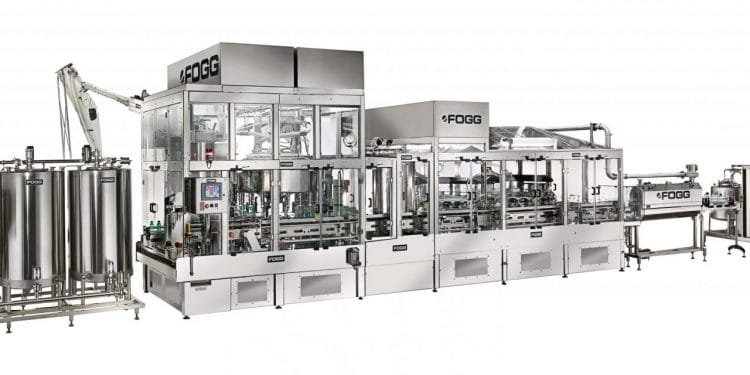Are you looking for a fully or partially automated bottling line? Are you making a major splash in the industrial world or beginning something new in your spare time?
Don’t worry, though; I’ll help you select a bottling line that will work for you and your budget.
01. What are you trying to fill?
There are many different items that can be filled, hence many different machines can be utilized for various filling tasks. So don’t be reluctant to bottle many products.
What goods would you like to bottle?
- Solids like powder or tablets are considered dry commodities.
- Low viscosity liquids include water and carbonated beverages.
- Liquids with a high viscosity, such as sauces and molasses.
Does your product have carbonation?
All carbonated beverages, including beer, champagne (sparkling wine), and fizzy drinks (soda), require a counter-pressure filler that will:
- Take the bottle’s air out.
- Fill the bottle to pressure with co2.
- Repeat the procedure until 99.9% of the oxygen is gone (double pre-evacuation).
- The carbonated liquid should be poured into the bottle from the bottom.
- ● In order to reduce foaming, the carbonated beverage may occasionally need to be refrigerated before water filling line may start.
02. Which kind of bottle would you like to fill?
As there are numerous substances that can be used to fill containers, in addition to numerous shapes and materials for bottling containers.
Some equipment can only bottle one kind of container while destroying the other kind.
Automated devices might, for instance, grasp the bottle from the top of the bottle container or from one of the bottle container’s sides.
The top grabber can be unable to take up the bottle if it has a distinctive or awkwardly shaped top. Additionally, the side grabber could be unable to move the bottle if it is too wide.
Size matters; it is crucial for us to know whether you will utilize ounces, liters, or gallons of container. Additionally, dimensions like shape, height, and diameter will be required.
It’s crucial to think about your clients’ preferred opening style: will they use a tiny or large lid, or will they unscrew the bottle’s top cap?
If you’re planning to package your product in aluminum cans? If so, a specific machine is needed for that top. Thus, let’s wrap up this chapter.
03. What number of bottles will you fill? How quickly do you require them?
There are a number of variables that can affect how quickly bottles are filled. Speed equals production, after all.
Bottles per hour, or bph, is a common unit of measure for bottling pace. Smaller machines and bpm, or bottles per minute, are typically affected by this.
This holds true for the more powerful and quick machines. The term “bpm” will be used throughout this essay.
04. What level of automation do you want?
For a small business or a brewing hobbyist, a more manual machine is ideal and would be a great investment. Even so, it might not satisfy the needs of a sizable or expanding business.
More labor will be needed to feed fillers into a semi-automatic machine. Compared to fully automatic machines, which likewise occupy less space than their larger brothers, it will be less expensive.
Since the automatic machines use a conveyor system to extract the bottles in bulk, they will require more space and fewer labor.
05. Do you prefer volumetric filling or liquid level filling?
Volumetric equipment
Do you want your machine to precisely fill the bottle with the filler’s volume? Due to a number of things you need to consider, it can end up being more expensive.
They are more expensive in the beginning since more measurement tools, such as timing, calibration, and balance, are needed.
It can be more expensive depending on your filling. It can perform better than a liquid-level machine if you load the container with black gold (oil) or any other pricey product. A difference will be noticed once every ten bottles.
Additionally, it will be less desirable because purchasers will find the bottles’ uneven appearance less inviting. The appearance of “fullness” won’t be exactly the same at all times.
Liquid level equipment
Since it fills all the bottles to a specific level, the term itself contains the meaning. As a result, all of the bottles will appear full and will be more tempting to buyers.
Many businesses that utilize it for cleaning products, breweries, wineries, and soft drink firms like this strategy.
With these machines, production filling speeds are increased and machine expenses are decreased.
Additionally, the gadget will help you save the occasional ounce that counts. Tens of thousands of dollars occasionally.
06. Do you have any particular requirements in terms of needs, features, or the bottling process?
Do you need more than just a bottling machine for your process? You can use anything from a bottle rinse to a capper to seal your products and keep them secure and usable.
In order to help you and to keep your consumers happy and content, please let us know about it as there are many different products on the market and various needs for various products.
An inline filling machine is what?
It is a device that lines up bottles to be filled.
What benefits do inline machines offer?
- They are affordable
- They are simple to modify to meet your needs.
- They are well-liked
- They can be produced with four heads, twenty heads, or even more.
What kinds of businesses employ inline filling equipment?
Small to medium-sized businesses typically use these kinds of equipment. The following scenarios could arise if something were to go wrong during production:
- You can halt the device.
- The device can be repaired.
- Compared to a rotary machine, the machine can be put back into production more quickly.
- Additionally, you are using fewer bottles.

















































